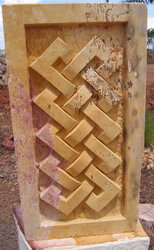My clearance wall is basically done and good to go for burning wood, although it's not "beautified" yet. It's simply sheets of Durock. I need your ideas, suggestions, advice, opinions on the following:
What material/product can I use to do a one coat, COLOR, wire-less/lathe-less, finish on this Durock?
I KNOW you guys aren't shy to offer up this kind of info...I appreciate any help in advance.
What material/product can I use to do a one coat, COLOR, wire-less/lathe-less, finish on this Durock?
I KNOW you guys aren't shy to offer up this kind of info...I appreciate any help in advance.





